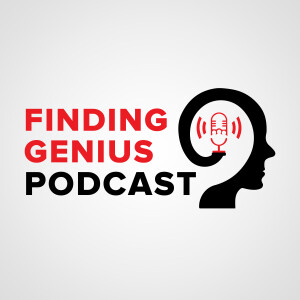
How Nature’s Technology Inspires New Cleaning Products
 2021-04-07
2021-04-07
Bacteria can teach us how to clean our homes and other environments more eco-consciously and effectively.
Press play to learn how, and discover:
- How people are affected by the use of common cleaning compounds versus the compounds being developed by Wuest and Minbiole
- What can be learned by studying bacteria that grow in soil, and the compounds they create to fend off pathogens
- What common foods (such as those left on restaurant tables) attract bacteria and promote their survival
Today's guests are William Wuest, GRA Distinguished Investigator & Associate Professor at Emory University, and Kevin Minbiole, Professor and Chair at Villanova University. Their paths first crossed over a decade ago, when both were pursuing a Ph.D. from the University of Pennsylvania in a group that was largely focused on natural product total synthesis. When they both decided to move to Philadelphia, they decided to meet up and team together to work on an area of overlapping interest: creating new disinfectant compounds.
About 10 or 15 years ago, they’d both realized just how dependent the world is on quaternary ammonium compounds, like those found in Lysol wipes and other common household cleaning products.
The active ingredients in Lysol were determined in the 1930s, and while they are effective and not very toxic, the simple fact that nature has encountered these compounds for decades (via dumping in waste waters) means that some bacteria have developed resistance to these compounds. Wuest and Minbiole saw a lot of room for improvement, and got to work.
Currently, they develop compounds that mimic nature, as well as some strictly synthetic compounds, but all with an aim toward biological relevance.
Wuest and Minbiole discuss the similarities and differences between these compounds and common household cleaning compounds, including their mechanism of action and structure. One difference is that the compounds being developed by Wuest and Minbiole have two or three positive charges, as opposed to only one, like those found in Lysol and other common cleaners.
This enables the compounds to stick more tightly to negatively charged cell membranes and bacteria, which makes them less vulnerable to the resistance mechanisms of bacteria. They’re also effective against biofilms, which present an entirely different level of complication of pathogenic bacteria.
Wuest and Minbiole discuss their strategies in developing compounds and the testing process for determining the best compounds for killing pathogens and leaving eukaryotic (e.g., human) cells untouched.
They seek inspiration from nature by looking at whether bacteria that grow in soil have evolved ways to make compounds to kill other pathogenic compounds around them. Specifically, this approach has led them to try developing compounds which target Pseudomonas aeruginosa, which is found in cystic fibrosis patients and wound injuries, as well as Streptococcus mutans, which causes cavities and endocarditis.
To modify the compounds, they add iron atoms, which bacteria need to survive. This encourages the bacteria to actively uptake the compounds, resulting in bacterial lysis.
Wuest and Minbiole discuss the details of all this and more.
Tune in for the full conversation, and visit http://kminbiol.clasit.org/ and
https://scholarblogs.emory.edu/wuestlab/.
More Episodes
Create your
podcast in
minutes
- Full-featured podcast site
- Unlimited storage and bandwidth
- Comprehensive podcast stats
- Distribute to Apple Podcasts, Spotify, and more
- Make money with your podcast
It is Free
- Privacy Policy
- Cookie Policy
- Terms of Use
- Consent Preferences
- Copyright © 2015-2024 Podbean.com






